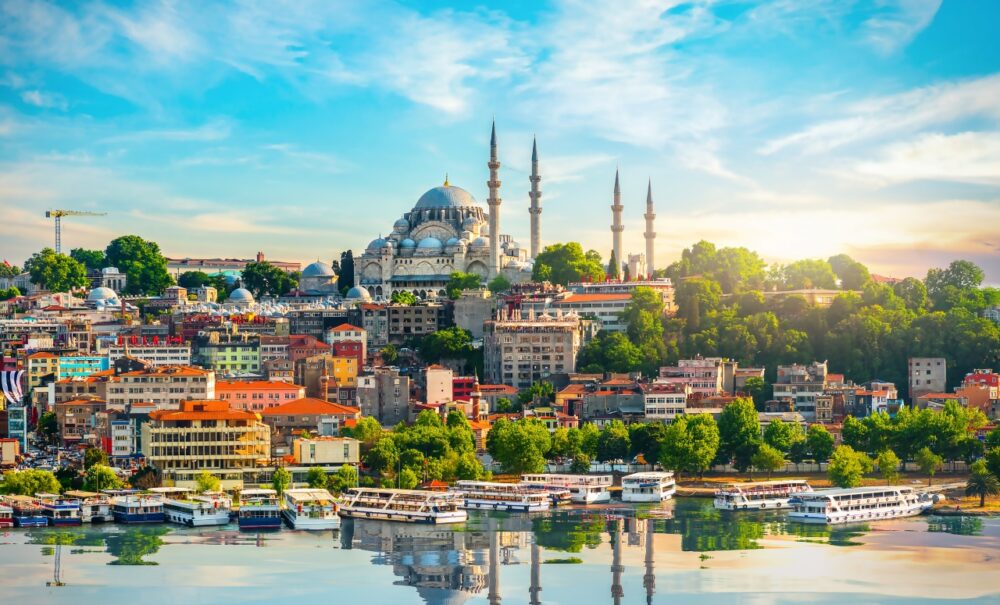
Istanbul, Turkey’s most iconic city, is where Europe and Asia come together in a harmonious blend of history, culture, and modernity. Renowned for its breathtaking architecture, lively bazaars, and mouthwatering cuisine, Istanbul offers an unforgettable travel experience. From admiring the domes of Hagia Sophia and the Blue Mosque to cruising along the Bosphorus and exploring the Grand Bazaar, this city is a treasure trove of wonders. But with so many incredible destinations in Turkey, you might wonder: is Istanbul worth visiting? In this post, we’ll uncover what makes Istanbul truly special and help you decide if it’s the right choice for your next adventure.
Table of Contents
Pros – Reasons You Should Visit Istanbul
1. A Unique Blend of Europe and Asia
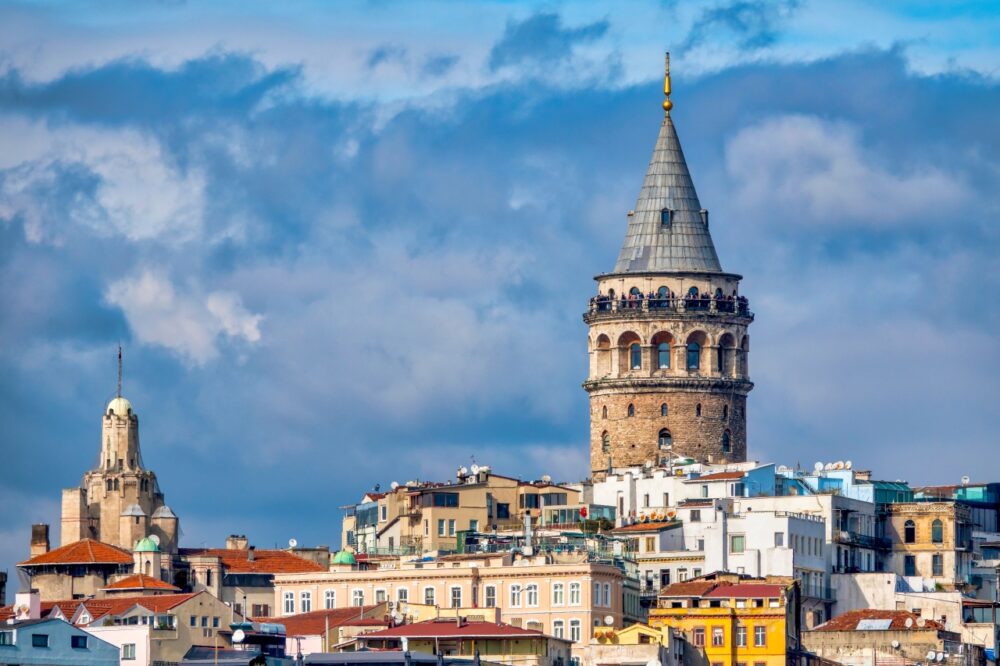
Istanbul is the only city in the world that spans two continents—Europe and Asia—separated by the Bosphorus Strait. This geographical position has shaped the city into a fascinating mix of cultures, architecture, and traditions, blending the influences of the East and the West in a way that no other place does.
I took a ferry from the European side to the Asian side of the city, and it was incredible how just a short ride could make it feel like I had stepped into a different world. The European side felt more historic and grand, with its mosques and palaces, while the Asian side had a more local, laid-back charm. This duality is what makes Istanbul such a special place to explore.
2. Rich History and Incredible Landmarks
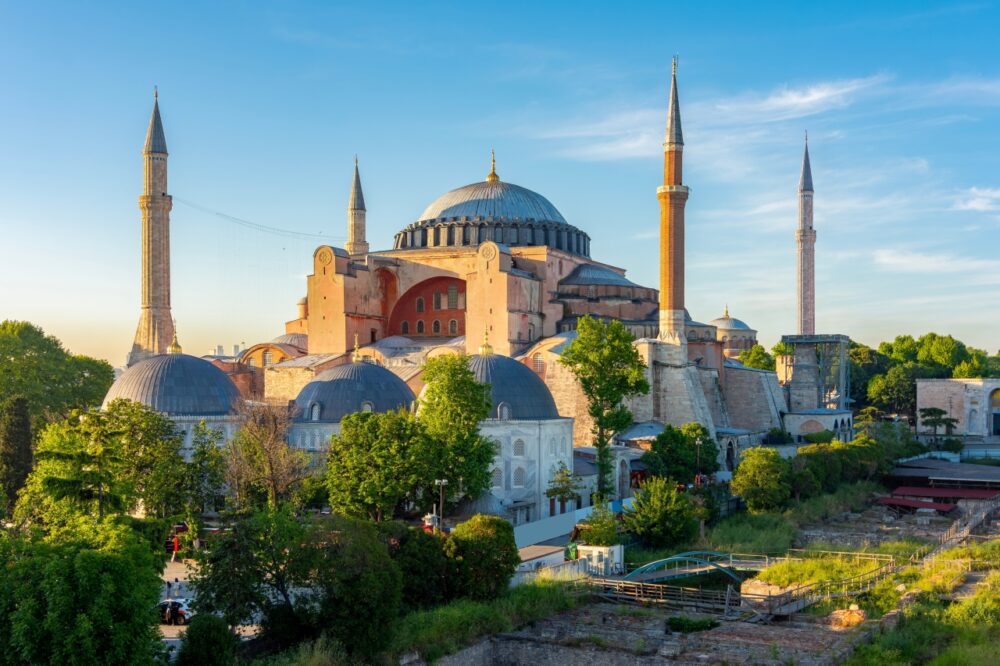
With a history that dates back over 2,500 years, Istanbul has been the capital of three major empires—the Roman, Byzantine, and Ottoman. As a result, the city is filled with stunning historical landmarks, including the Hagia Sophia, the Blue Mosque, and Topkapi Palace, each telling a different chapter of its incredible past.
Walking into the Hagia Sophia was a surreal experience. The sheer size of the building, the golden mosaics, and the mix of Christian and Islamic elements were breathtaking. A short walk away, the Blue Mosque was equally stunning, with its six towering minarets and intricate blue tilework. The sense of history in Istanbul is overwhelming, and everywhere you turn, there’s another incredible site waiting to be explored.
3. The Grand Bazaar – A Shopper’s Paradise
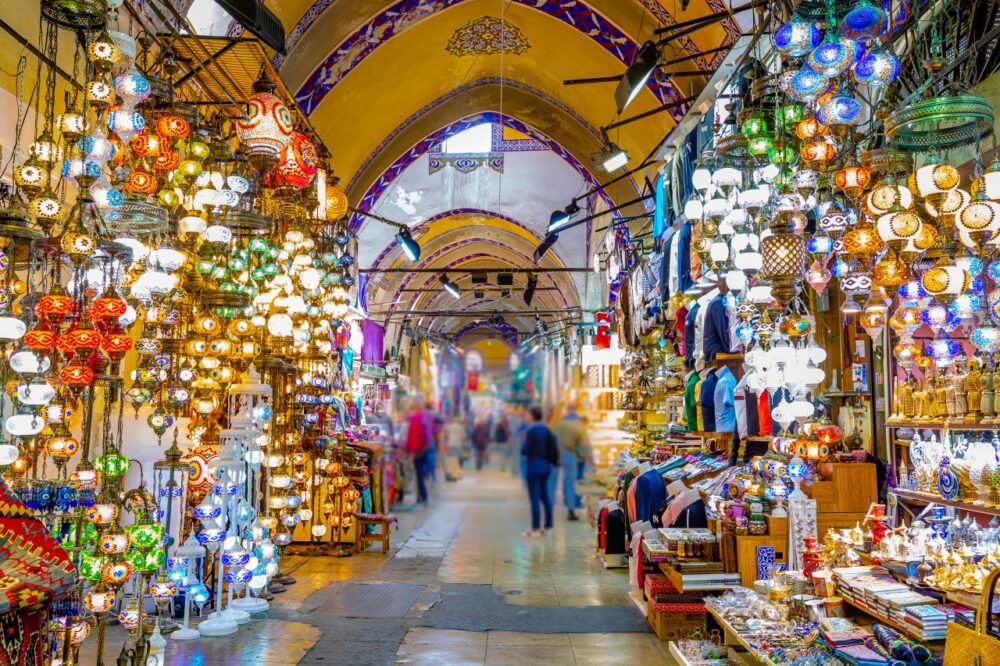
Istanbul is home to one of the oldest and largest covered markets in the world, the Grand Bazaar. With over 4,000 shops selling everything from handmade carpets and ceramics to spices and jewelry, it’s a place where you could easily spend hours wandering through the maze-like alleys, soaking up the sights, smells, and sounds.
I loved the experience of bargaining with shopkeepers, who always seemed ready with a cup of Turkish tea and a friendly smile. Even if you’re not looking to buy anything, the atmosphere is electric, with the scent of spices in the air, colorful lamps hanging from the ceilings, and the constant buzz of people haggling over prices. It’s a must-visit for anyone wanting to experience the heart of Istanbul’s trade culture.
4. Delicious and Diverse Turkish Cuisine
Turkish food is some of the best in the world, and in Istanbul, you get to experience it in its most authentic form. From sizzling kebabs to fresh seafood, from flavorful mezes to sweet baklava, the city’s food scene is a feast for the senses. Whether you’re eating in a fancy restaurant or grabbing a simit (Turkish bagel) from a street vendor, the flavors are always rich and satisfying.
I tried an Iskender kebab at a small restaurant in Beyoğlu, and it was one of the best meals I’ve ever had—thinly sliced meat covered in tomato sauce and yogurt, served over warm pita bread. Another highlight was enjoying freshly grilled fish by the Bosphorus, with a view of the water and seagulls flying overhead. If you’re a foodie, Istanbul is an absolute dream.
5. The Vibrant and Authentic Local Markets
Beyond the famous Grand Bazaar, Istanbul has countless local markets where you can experience the daily life of the city. The Spice Bazaar is filled with fragrant spices, dried fruits, and Turkish delight, while Kadıköy Market on the Asian side offers fresh produce, seafood, and local delicacies.
I spent a morning exploring the Spice Bazaar, and the variety of smells and colors was intoxicating. Vendors handed out samples of nuts and sweets, and I ended up buying a mix of saffron, sumac, and fresh Turkish delight to take home. Unlike in many tourist markets, these places feel authentic, with locals shopping alongside visitors, making for a truly immersive experience.
6. A City That Never Sleeps
Istanbul is one of the most vibrant and energetic cities in the world. No matter what time of day or night, there’s always something happening, from bustling cafés and tea houses to late-night street food stalls and lively bars in areas like Beyoğlu and Kadıköy. The city has an energy that is both chaotic and exciting, making it an amazing place for night owls and those who love a buzzing atmosphere.
I remember walking through Istiklal Street at midnight and being amazed at how alive the city still was. Street musicians played traditional Turkish tunes, groups of friends gathered in cafés, and vendors were still selling roasted chestnuts and grilled corn. The energy in Istanbul never seems to die down, making it a city where there’s always something to do.
7. Breathtaking Views from Rooftops and Hills
One of the best ways to appreciate Istanbul’s beauty is from above. The city has plenty of rooftop cafés and restaurants that offer stunning views over the Bosphorus, the Golden Horn, and the skyline filled with minarets and domes. Some of the best viewpoints include the Galata Tower, Pierre Loti Hill, and the many rooftop terraces in Sultanahmet and Beyoğlu.
I climbed the Galata Tower just before sunset, and the panoramic view was unforgettable. The way the golden light hit the city’s rooftops, with the Bosphorus stretching out in the distance, was one of the most beautiful sights I’ve ever seen. Whether it’s from a tower, a hill, or a rooftop bar, seeing Istanbul from above is an absolute must.
8. The Relaxing and Traditional Turkish Hammams
One of the most unique experiences in Istanbul is visiting a traditional hammam, or Turkish bath. These historic bathhouses offer a mix of relaxation and cultural immersion, with steam rooms, hot stone slabs, and traditional scrubbing and massage treatments. Some of the most famous hammams in Istanbul date back to the Ottoman era, providing a glimpse into centuries-old bathing rituals.
I visited the Çemberlitaş Hammam, a historic bathhouse dating back to the 16th century, and it was one of the most relaxing experiences of my trip. After a steam session, I had a traditional scrub and foam massage, leaving me feeling completely refreshed. It’s a fantastic way to unwind after a long day of sightseeing and experience an authentic part of Turkish culture.
9. An Efficient and Affordable Public Transport System
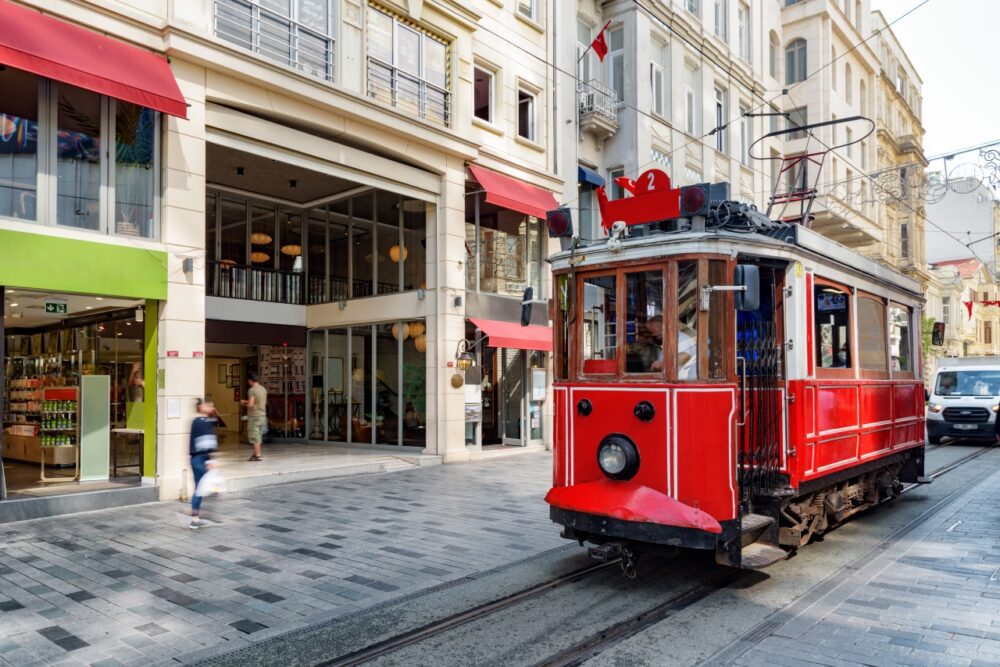
Despite being a sprawling metropolis, Istanbul has a surprisingly good public transport system that includes trams, ferries, buses, and a metro. The ferries, in particular, offer a scenic and enjoyable way to travel between the European and Asian sides, often providing some of the best views of the city.
I used the Istanbulkart, a rechargeable travel card, and it made getting around the city incredibly easy and affordable. The ferry rides were a highlight—watching the skyline from the water while sipping Turkish tea was a peaceful break from the busy streets. Compared to other major cities, Istanbul’s transport system is efficient and budget-friendly.
10. A City That Feels Timeless and Ever-Changing
Istanbul is a city that constantly evolves while still holding on to its deep-rooted traditions. Walking through the streets, you’ll see the old and new blending seamlessly—modern skyscrapers standing next to centuries-old mosques, traditional tea houses next to trendy coffee shops, and ancient markets coexisting with high-end boutiques. This mix of past and present is what makes Istanbul such an exciting and dynamic place to visit.
I found myself constantly amazed by how the city could feel both historic and modern at the same time. One moment, I was stepping into a centuries-old mosque, and the next, I was in a stylish rooftop bar overlooking the Bosphorus. Istanbul is a place that feels both timeless and ever-changing, making every visit feel new and exciting.
Cons – Things to Consider When Visiting Istanbul
1. Traffic Can Be Chaotic and Unpredictable
Istanbul is a massive city with a population of over 15 million people, and its streets are often congested with cars, buses, taxis, and motorbikes. Rush hour traffic can bring parts of the city to a standstill, especially on major roads like the Bosphorus bridges connecting the European and Asian sides. What should be a short 20-minute drive can easily turn into an hour or more of frustrating stop-and-go movement.
I experienced this firsthand when trying to get from Sultanahmet to Taksim Square in a taxi during peak evening hours. The driver, clearly used to the chaos, weaved in and out of traffic, honking and maneuvering aggressively just to move a few meters forward. Eventually, I realized it would have been faster to take public transport or even walk part of the way. If you’re visiting Istanbul, using the tram, metro, or ferries whenever possible is the best way to avoid getting stuck in traffic.
2. Tourist Crowds Can Be Overwhelming
Istanbul is one of the most visited cities in the world, and its most famous attractions—such as the Hagia Sophia, Blue Mosque, and Grand Bazaar—can be packed with tourists, especially during peak seasons like spring and summer. Long lines, crowded streets, and packed public transport can sometimes take away from the experience, making it difficult to enjoy the city at a relaxed pace.
When I visited the Grand Bazaar in the afternoon, it was so crowded that moving from one shop to another felt like being carried by a wave of people. The same happened at the Hagia Sophia, where the line to enter wrapped around the building. I quickly learned that arriving early in the morning or visiting attractions later in the evening helped avoid the worst of the crowds. If you prefer quieter experiences, consider exploring less-visited neighborhoods like Balat, Kuzguncuk, or Moda for a more local feel.
3. Some Areas Can Feel Overly Touristy and Pushy
While Istanbul has an incredible mix of authentic and modern experiences, some areas—especially around Sultanahmet and Istiklal Street—can feel overly commercialized and geared towards tourists. In these high-traffic areas, it’s common to encounter persistent shopkeepers, restaurant staff calling out to visitors, and even some tourist scams. While this is part of the energy of Istanbul, it can sometimes feel overwhelming.
I walked down Istiklal Street and was constantly approached by people trying to sell me everything from carpets to boat tours. In some restaurants near the major tourist sites, waiters actively called out to passing tourists, trying to lure them inside with promises of “the best kebab in Istanbul.” While most of these interactions were harmless, it sometimes made it difficult to simply enjoy a peaceful walk. The best way to avoid this is to explore quieter neighborhoods like Cihangir, Nişantaşı, or the Asian side, where the atmosphere is more relaxed and less tourist-driven.
4. Stray Animals Are Everywhere, Which Can Be Both Charming and Challenging
Istanbul is famous for its large population of stray cats and dogs, which have become a beloved part of the city’s identity. While many locals care for them, providing food and water, their presence can sometimes be a challenge for visitors who are not used to stray animals. Dogs may occasionally wander into traffic or gather in groups, and while most are friendly, some travelers might find it uncomfortable.
I loved seeing the cats lounging on café chairs or curled up in the corners of bookstores, and most of the stray dogs I encountered were calm and well-fed. However, in some areas, I noticed large groups of dogs near parks and streets, and their sudden barking at night could be a little unsettling. The city does a great job of taking care of them, but if you’re not comfortable around animals, you might find their presence a bit overwhelming in certain parts of Istanbul.
5. Scams and Overpricing Target Tourists
As in many major tourist cities, some areas of Istanbul have scams and overpricing schemes that specifically target visitors. Some of the most common include taxi drivers refusing to use the meter, restaurants adding hidden charges to bills, and shops in tourist-heavy areas inflating prices significantly. While Istanbul is generally safe, these minor inconveniences can be frustrating if you’re not aware of them.
One evening, I took a taxi from Sultanahmet to Karaköy, and the driver quoted me a fixed price instead of using the meter. Knowing this was a common trick, I insisted on the meter, but he still tried to overcharge me at the end of the ride. Another time, I sat at a restaurant near the Blue Mosque, only to find an unexpected “service charge” added to the bill. To avoid these situations, always confirm prices in advance, use ride-hailing apps like BiTaksi instead of flagging taxis on the street, and dine at places recommended by locals rather than those in the most tourist-heavy areas.
When to Visit Istanbul
The best times to visit Istanbul are spring (April to June) and autumn (September to November). During these months, the weather is mild, and the city’s outdoor attractions, such as the Blue Mosque and Topkapi Palace, are most enjoyable. Summer (July to August) is hot and crowded, but it’s also a lively time with bustling bazaars and long evenings by the Bosphorus. Winter (December to February) is quieter, with fewer tourists and occasional snow adding a magical touch to the city’s iconic landmarks.
How to Get to Istanbul
Istanbul has two major airports: Istanbul Airport (IST) on the European side and Sabiha Gökçen International Airport (SAW) on the Asian side. Both airports are well-connected to international destinations. From IST, the Havaist airport shuttles or the metro offer efficient and affordable transfers to the city centre. From SAW, Havabus shuttles and buses connect to central districts like Taksim. Taxis and ride-hailing apps like BiTaksi are widely available, though more expensive. If arriving from neighbouring countries, international trains and buses also serve Istanbul.
Where to Stay in Istanbul
Istanbul’s accommodation options cater to every type of traveller:
- Luxury: Sultanahmet or Bosphorus Area – Stay at Four Seasons Hotel Istanbul at Sultanahmet, offering historical elegance, or Ciragan Palace Kempinski, a luxurious retreat on the Bosphorus.
- Mid-range: Beyoglu or Taksim – Consider Tomtom Suites, a boutique hotel with charm, or The Marmara Taksim, offering excellent value and location.
- Budget: Sirkeci or Kadikoy – Try Cheers Hostel, a lively option for backpackers, or Hush Hostel Lounge, a budget-friendly spot on the Asian side.
Getting Around Istanbul
Istanbul’s extensive public transport system makes getting around relatively easy. The metro, trams, buses, and ferries are affordable and efficient. Purchase an Istanbulkart, a rechargeable transit card, for convenient access to all modes of public transport. Trams are great for sightseeing, with the T1 line connecting Sultanahmet, the Grand Bazaar, and other key landmarks. Ferries offer scenic rides across the Bosphorus, linking the European and Asian sides of the city. Taxis and ride-hailing apps are available, but traffic can be heavy. For a unique experience, consider renting a bike to explore parks like the Prince Islands.
How Long to Spend in Istanbul
Four to five days is ideal for exploring Istanbul’s rich history and culture. Dedicate your first two days to the Old City, visiting iconic landmarks like the Hagia Sophia, Blue Mosque, and Grand Bazaar. Spend a day exploring Beyoglu and Istiklal Avenue, including a visit to the Galata Tower. Use the fourth day for a Bosphorus cruise and exploring the Asian side, including Kadikoy and Moda. With more time, take a day trip to the Prince Islands or the ancient city of Troy. Istanbul’s dynamic energy and layers of history will leave a lasting impression.
Conclusion
So, is Istanbul worth visiting? Absolutely! If you’re fascinated by history, mesmerised by diverse cultures, and drawn to a city with unparalleled energy, Istanbul is a must-visit. Its iconic landmarks, mouthwatering cuisine, and unique position bridging two continents make it a destination like no other. While its size and bustling pace might be overwhelming for some, the magic of Istanbul far outweighs the challenges. For travellers seeking a city that’s as dynamic as it is historic, Istanbul is a place that will leave you inspired and eager to return.
